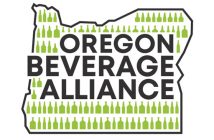The investments in the R&D department of the pharmaceutical industry reached 70 billion dollars USD in 2017 and estimations interpret that by 2024 the investments will increase up to 200 billion dollars. The pharmaceutical industry is one of the top industries to refocus on research and development whether it’s a clinical trial company, a drug development company, a viral vector manufacturing facility, or a CDMO. With changing technologies and increasing pathologies, research must go up a notch.
1. Set Your Priorities:
Before working on strategies, the company must align its departments to have shared priorities because different departments like sales, management, and manufacturing have diverse priorities.
The priorities you set should define the following
- Investing in drugs that have market potential.
- Rooting for a product that is more likely to pass through the clinical trial especially phase III.
- Entering a niche with less competition and more potential for revenue generation.
- Making the business global.
- Penetration in emerging markets.
2. Process Optimization:
Optimizing and automating the management processes ensure higher R&D efficiency and success. Process standardization has several benefits.
- Decrease manual labor
- Saving time
- Reducing redundancies
- Product reaching the market earlier
- Simplifying the process
- Decreasing the risk of human misjudgment
- Improving collaboration and compliance
Process optimization not only benefits R&D but the whole organization.
3. Big Data Mining:
Big data has taken precedence in life sciences because, in healthcare, the data comes from diverse sources. The more diverse the data, the better insights and conclusions it can draw. According to an estimation, adopting big data strategies can help in mining 100 billion dollars annually across the US healthcare system. This funding can be used for
- Giving space to innovation and creation
- Precision in trial enrolling
- Real-time monitoring of trials
- The increasing flow between R&D and CROs
4. Considering the Risks Beforehand:
Risk management is an important tool n improving the R&D of your company. FDA is risk-averse, and it has provided guidelines to help companies in developing quality products. A risk-based approach will include analysis, evaluation, prioritization, and handling of all possible risks in any department.
By putting in place a risk assessment and management center, a company can be on the right path to developing the products and the quality that the market needs.
5. Strategic Alliances:
Insufficiency, inefficiency, and technology are increasing the costs of R&D all across the pharmaceutical industry, regardless of the niche and the size of the company. A lot is changing around the world. Every day, new, better, and more expensive technology is pouring in. it is difficult to stay on top of all of this. While change is often seen as a threat, it can provide fertile ground to build strategic alliances with other companies. Shared expenses and mutual collaboration can achieve better and more efficient R&D.
Conclusion
The success of any pharmaceutical company depends mostly on the authentic research and development of a drug. It is the first step in moving a new product into the market and it must be a strong one. The pharmaceutical sector globally needs to strive for the betterment of the strategic development of R&D departments if they want to stay relevant.






